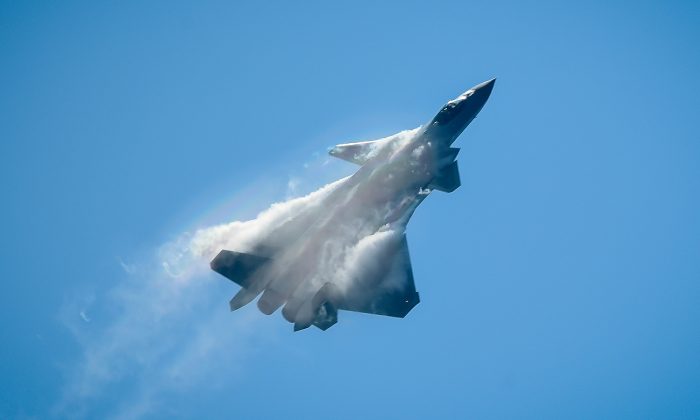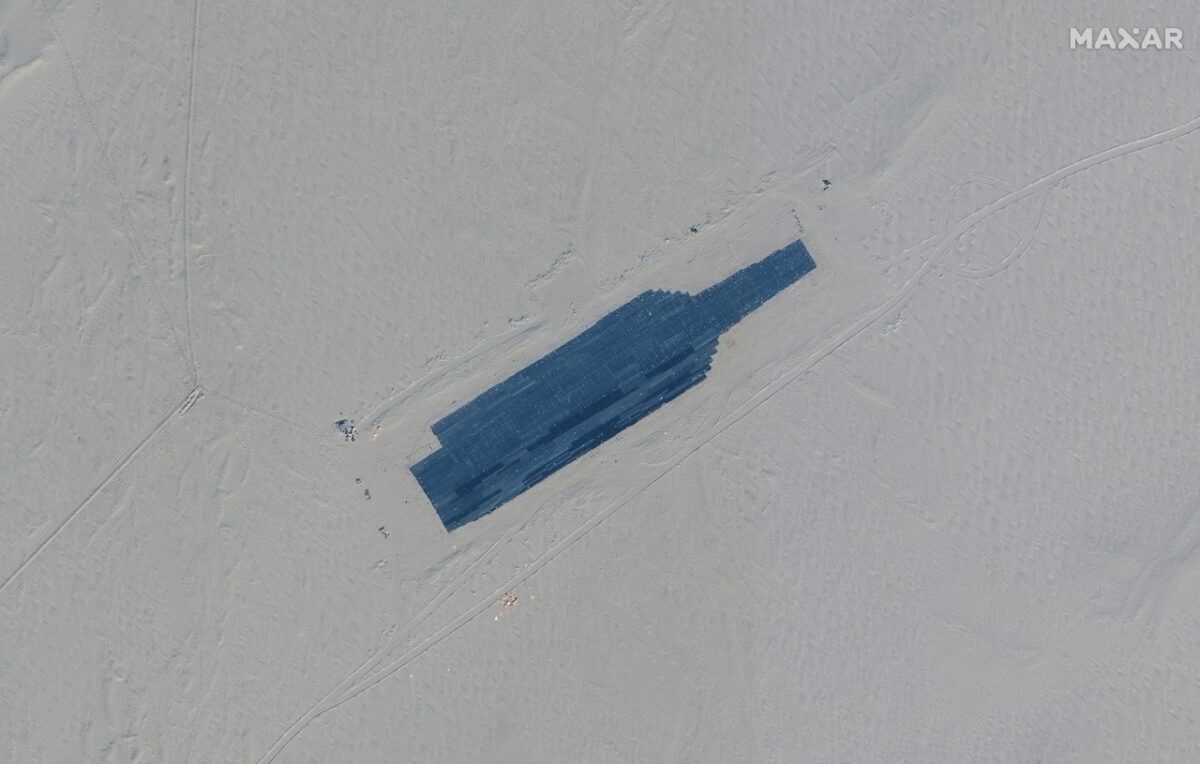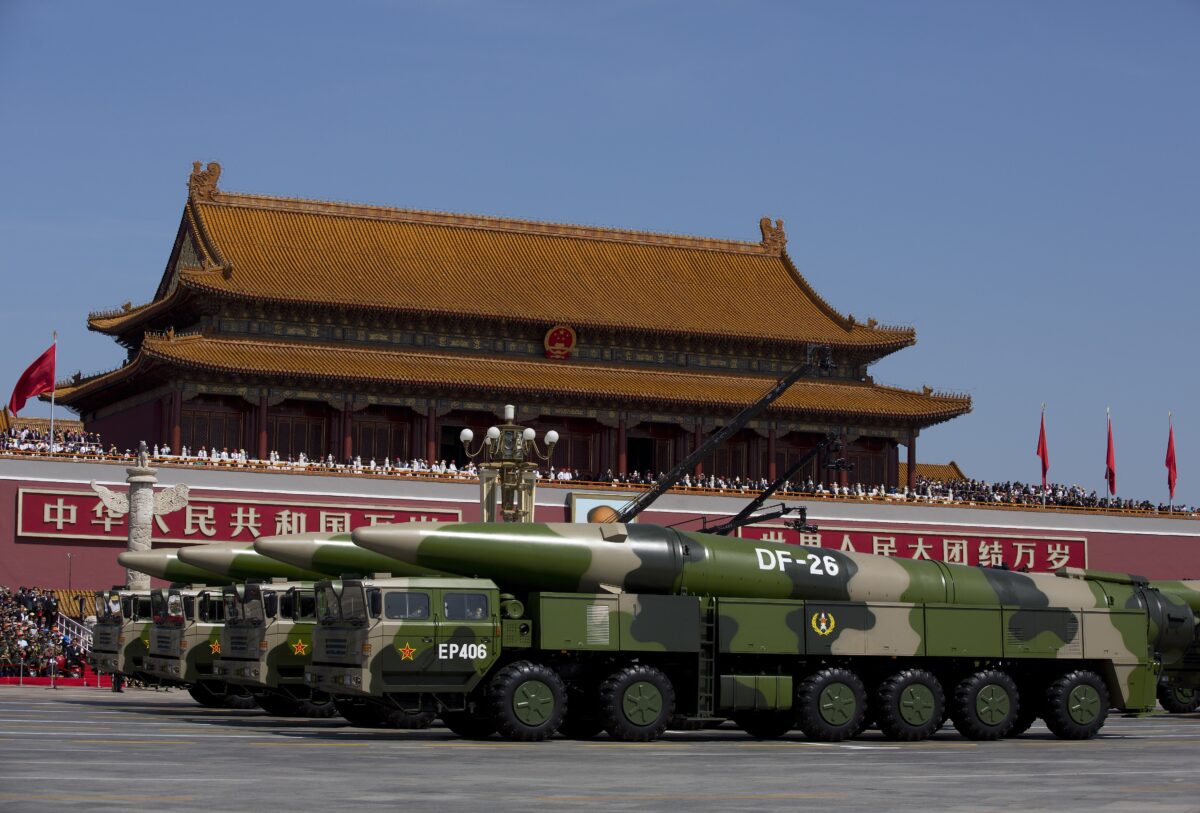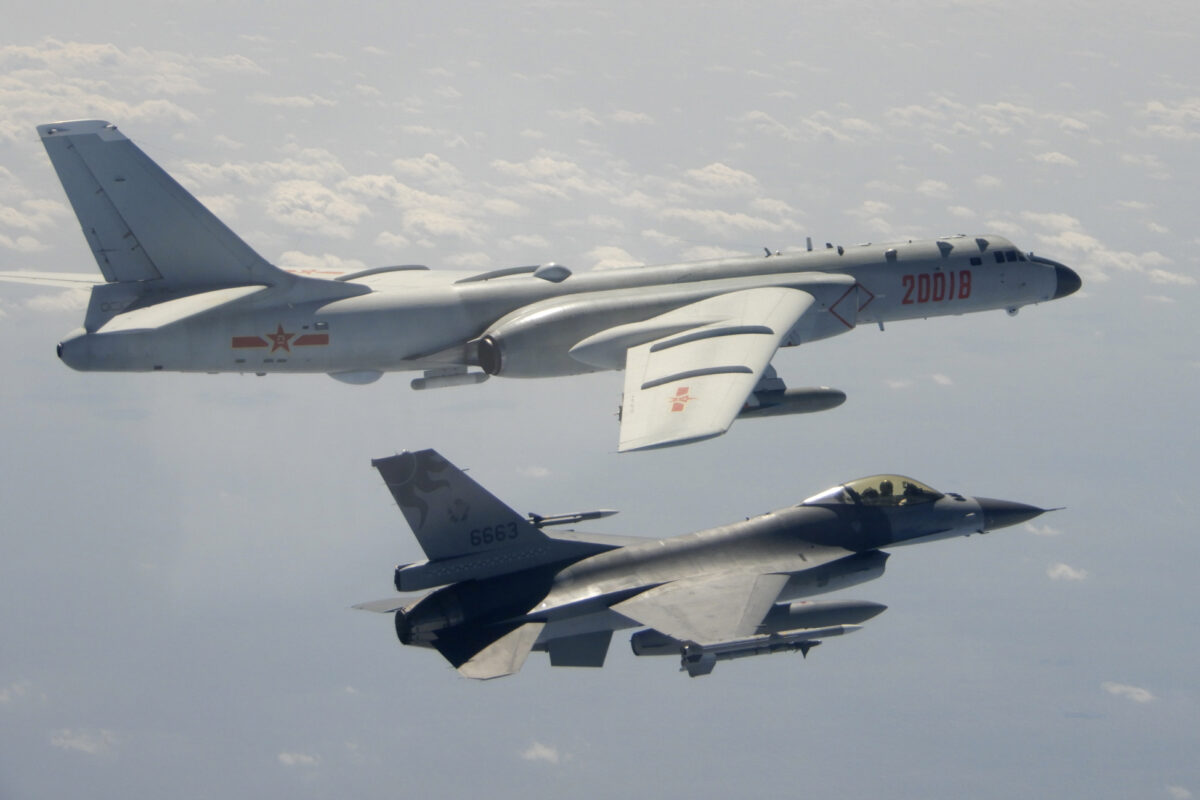Ellanjay
Well-Known Member
- Joined
- Dec 3, 2018
- Messages
- 58

Chinese J-20 stealth fighters perform at the Airshow China 2018 in Zhuhai, south China’s Guangdong Province on Nov. 6, 2018. (Wang Zhao/AFP/Getty Images)
Chinese Military Improves Capabilities While America Sleeps
Stu Cvrk
November 25, 2021
News Analysis
China’s People’s Liberation Army (PLA) is undergoing a massive buildup in capabilities while the world is distracted.
The PLA has embarked on a massive buildup in recent years that has been cleverly camouflaged by the pandemic, a Chinese Communist Party (CCP) charm offensive on the diplomatic front, and the supposed “benevolence” of the Belt and Road Initiative.
The goal is to become the world’s dominant military power in all facets of kinetic warfare by 2049, the centenary anniversary of the CCP’s takeover of China and the establishment of the People’s Republic of China (PRC). A key element of their misdirection campaign, while this modernization effort has been underway, has been fomenting domestic political discord in the United States by supporting activist organizations such as Black Lives Matter and exploiting the legacy and social media sympathetic to China.
While many Americans have been purposely distracted accordingly, major advances in capabilities have been made by the PLA on all fronts.
Here is a short list based on recent media reports:
Hypersonic Missiles: The general officer in charge of the U.S. Space Force admitted on Nov. 20 that the United States was “behind” China and Russia in the deployment of hypersonic missiles.
In 2019, the PLA-Rocket Force (PLARF) was the first to deploy the Dongfeng-17 (DF-17) medium-range ballistic missile, which mounts the DF-ZF Hypersonic Glide Vehicle, after displaying it for the first time last fall in Beijing, marking the 70th anniversary of the Communist Party’s rule.
“The DF-17 is the first deployed hypersonic strike weapon for the PLA and can travel at speeds of more than 7,000 miles per hour—enough to outrun current U.S. anti-missile interceptors,” according to The Washington Times.
This new class of missiles greatly decreases defensive reaction times, and the ability to detect pre-launch actions is complicated, as the weapons do not require easily detected launch preparations, which complicates the tactical decision-making thought process of commanders.
The Chinese have also built silhouettes in the sand in the shape of an American aircraft carrier and Arleigh Burke-class guided missile destroyers in the Taklamakan desert, as part of a new target range complex for long-range missile practice—a very aggressive preparation for potential future hostilities.

A satellite picture shows a carrier target in Ruoqiang, Xinjiang, China, on Oct. 20, 2021. (Satellite Image ©2021 Maxar Technologies/Handout via Reuters)
Nuclear Weapons: There has been a disciplined, decades-long campaign by the CCP to rapidly acquire, re-engineer, and integrate nuclear weapons technologies into an array of sophisticated weapons, missiles, surveillance systems, communications, and command and control capabilities. This culminated in the breakout deployment in Inner Mongolia of an estimated 300 new intercontinental ballistic missile silos.
As reported by the Financial Times just last week, U.S. experts in the Pentagon are forecasting that the PLARF will quadruple its nuclear warhead arsenal to over 1,000 by 2030, which, combined with a massive buildup of conventional warfare capabilities, will change the strategic balance in East and South Asia. The deployment of road-mobile Dongfeng-26 (DF-26) intermediate-range ballistic missiles also continues apace.
The transformation of China’s strategic rocket force from an antiquated mixture of older Soviet technology, plus indigenous modifications into a modern capability that is nearing parity with the United States, is breathtaking both in its scope and also the rapidity in which it was accomplished.
Lastly, with the delivery of two new SSBNs over the past two years, the PLA-Navy (PLAN) now have six operational Jin-class Type 094 SSBNs, which gives the PRC a viable third leg of its nuclear triad.

Chinese military vehicles, carrying DF-26 ballistic missiles, drive past Tiananmen Square during a military parade in Beijing, China, on Sept. 3, 2015. (Andy Wong/Pool/Getty Images)
[More see Comment/PDF]
https://mp3mp4pdf.net/americasleeps.pdf

